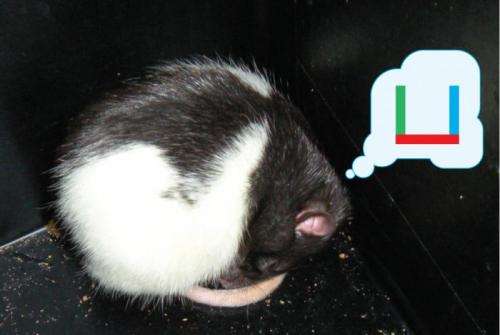Neurons in the rat brain use a preexisting set of firing sequences to encode future navigational experiences

Specialized neurons called place cells, located in the hippocampus region of the brain, fire when an animal is in a particular location in its environment, and it is the linear sequence of their firing that encodes in the brain movement trajectories from one location to another. Building on previous work, George Dragoi and Susumu Tonegawa from the RIKEN–MIT Center for Neural Circuit Genetics have now shown that place cells have a preexisting inventory of firing sequences that they can use to encode multiple novel routes of exploration1.
Specific sequences of place cells are known to encode spatial experiences, but it has been debated whether such sequences are formed during a new experience or preformed and adapted to specific experiences when required. Dragoi and Tonegawa recently showed that 'future' place cells fire in sequence while the animal is asleep, prior to experiencing a novel environment, and that animals use this preexisting neuronal firing pattern to rapidly learn how to navigate their surroundings.
To confirm and investigate this mechanism further, the researchers first recorded the neuronal activity of place cells in rats during one hour of sleep. Next, they monitored this activity during movement along a track that the rat had not previously explored, and later recorded it during movement along the same track with two additional lengths separated by right-angle turns. They then correlated the temporal pattern of place cell activity recorded during sleep with the spatial pattern of activity recorded while the animals were freely exploring the longer track.
The researchers found that the sequences of place cell activity were unique for each of the three lengths of the track and matched those recorded during sleep (Fig. 1). "We had observed the same sequences as independent clusters of correlated temporal sequences during the preceding sleep period," explains Dragoi.
The results suggest that rapid encoding of particular trajectories within novel environments is achieved during exploration by selecting from a set of preexisting temporal sequences that fired during sleep. In other words, hippocampal place cells appear to be prearranged into sets of sequential firing cells that can be adapted rapidly to encode for multiple spatial trajectories that the animal could undertake in its surroundings. Based on their data, Dragoi and Tonegawa predict that the sets of hippocampal place cells could encode for at least 15 unique future spatial experiences. In addition, their findings could explain the role that the hippocampus plays in humans in imagining future encounters within our own complex environment.
More information: Proceedings of the National Academy of Sciences USA 110, 9100–9105 (2013). DOI: 10.1073/pnas.1306031110
















